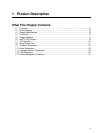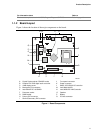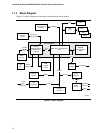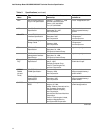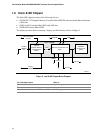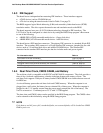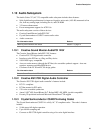
Product Description
17
1.5 System Memory
CAUTION
To be fully compliant with all applicable Intel
®
SDRAM memory specifications, the board should
be populated with DIMMs that support the Serial Presence Detect (SPD) data structure. If your
memory modules do not support SPD, you will see a notification to this effect on the screen at
power up. The BIOS will attempt to configure the memory controller for normal operation;
however, DIMMs may not function at the determined frequency.
CAUTION
Because the main system memory is also used as video memory, the board requires a 100 MHz
SDRAM DIMM even though the host bus frequency is 66 MHz. It is highly recommended that an
SPD DIMM be used, since this allows the BIOS to read the SPD data and program the chipset to
accurately configure memory settings for optimum performance. If non-SPD memory is installed,
the BIOS will attempt to correctly configure the memory settings, but performance and reliability
may be impacted.
The board has one DIMM socket. The minimum memory size is 32 MB and the maximum
memory size is 256 MB. The BIOS automatically detects memory type, size, and frequency.
The board supports the following memory features:
• 3.3 V, 168-pin DIMM with gold-plated contacts
• 100 MHz SDRAM
• Serial Presence Detect (SPD) or non-SPD memory (BIOS recovery requires an SPD DIMM)
• Non-ECC (64-bit) memory
• Unbuffered single- or double-sided DIMM
The board is designed to support the DIMM configurations listed in Table 4 below.
Table 4. System Memory Configuration
DIMM Size Non-ECC Configuration
32 MB 4 Mbit x 64
64 MB 8 Mbit x 64
128 MB 16 Mbit x 64
256 MB (Note) 32 Mbit x 64
Note: A 256 MB DIMM used with this board must be built with 128 Mbit device technology.
For information about Refer to
The
PC Serial Presence Detect Specification
Table 2, page 13
Obtaining copies of PC SDRAM specifications http://www.intel.com/design/pcisets/memory



